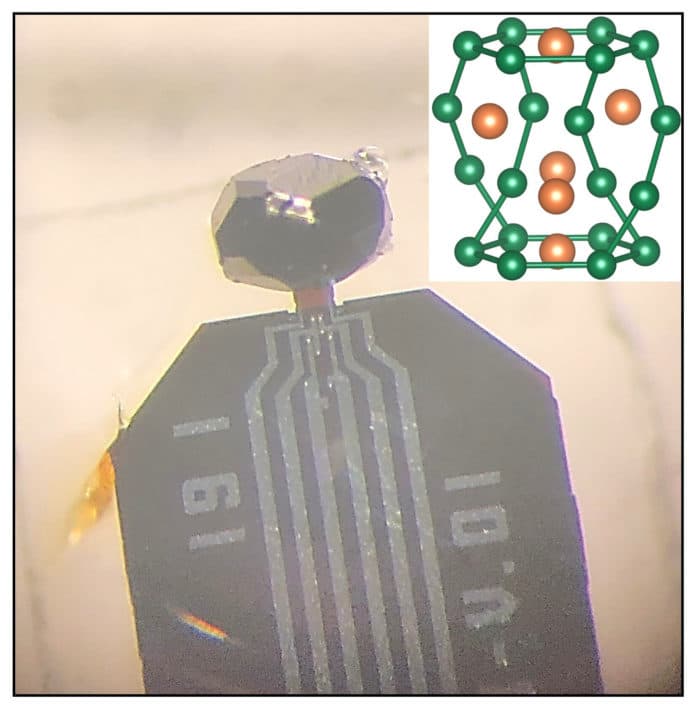In a newly created metallic specimen, the electrons flow the same way as water flows in a pipe. This phenomenon- fundamentally changing from particle-like to fluid-like dynamics occurs in the metal superconductor, a synthesis of Niobium and Germanium (NbGe2).
The strong interaction between electrons and phonons alters the transport of electrons from the diffusive, or particle-like, to hydrodynamic, or fluid-like, regime. This is the first discovery of an electron-phonon liquid inside NbGe2.
Boston College Assistant Professor of Physics Fazel Tafti said, “We wanted to test a recent prediction of the ‘electron-phonon fluid. Typically, electrons are scattered by phonons which leads to the usual diffusive motion of electrons in metals. A new theory shows that when electrons strongly interact with phonons, they form a united electron-phonon liquid. This novel liquid will flow inside the metal exactly in the same way as water flows in a pipe.”
“The discovery will spur further exploration of the material and its potential applications.”
Scientists used three experimental methods: electrical resistivity, Raman scattering, and X-ray diffraction. Electrical resistivity measurements showed a higher-than-expected mass for electrons; Raman scattering showed a change of behavior in the vibration of the NbGe2 crystal due to the special flow of electrons, and X-ray diffraction revealed the crystal structure of the material.
Then, by using a Quantum oscillation technique, scientists were able to evaluate the mass of electrons in the material. They found that the mass of electrons in all trajectories was three times larger than the expected value.
Tafti said, “This was truly surprising because we did not expect such ‘heavy electrons’ in a seemingly simple metal. Eventually, we understood that the strong electron-phonon interaction was responsible for the heavy electron behavior. Because electrons interact with lattice vibrations, or phonons, strongly, they are ‘dragged’ by the lattice, and it appears as if they have gained mass and become heavy.”
“The next step is to find other materials in this hydrodynamic regime by leveraging the electron-phonon interactions.”
The study was conducted in collaboration with colleagues from the University of Texas at Dallas and Florida State University.
Journal Reference:
- Evidence of a coupled electron-phonon liquid in NbGe2, Nature Communications (2021). DOI: 10.1038/s41467-021-25547-x
